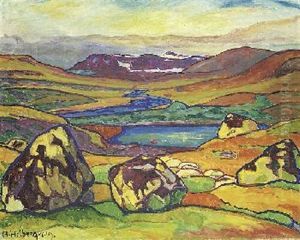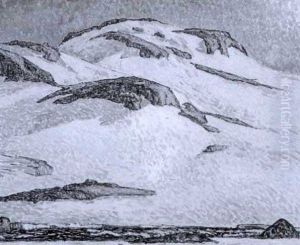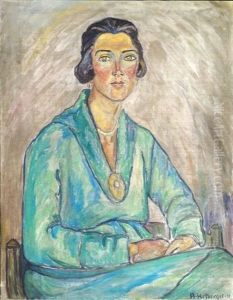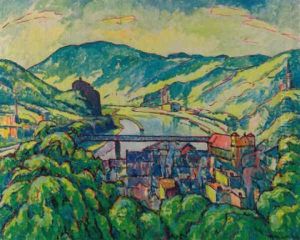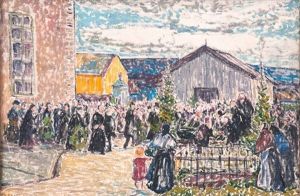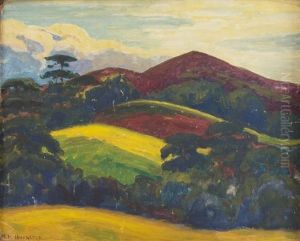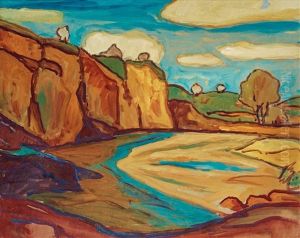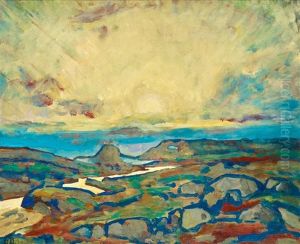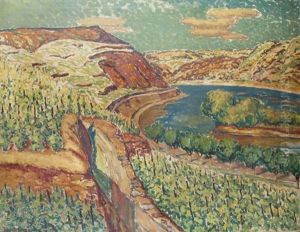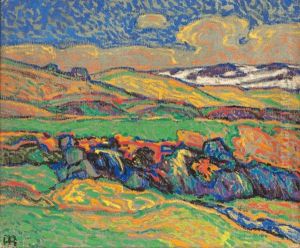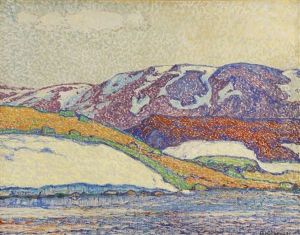Alfred Hermann Helberger Paintings
Alfred Hermann Helberger was a German painter born on August 28, 1871, in Frankfurt am Main, Germany. He is known for his contributions to German Impressionism and the Berlin Secession movement. Helberger studied at the Städelsches Kunstinstitut in Frankfurt before moving on to further his education at the Académie Julian in Paris. There, he was influenced by the works of contemporary French artists, which is evident in his use of light and color in his own paintings.
Helberger's work encompassed a variety of subjects, including landscapes, urban scenes, portraits, and nudes. His approach to Impressionism was characterized by a vibrant palette and a dynamic brushwork, which allowed him to depict the transient effects of light and atmosphere with a sense of immediacy.
In the early 20th century, Helberger became a member of the Berlin Secession, an association of artists who sought to break away from the traditional academic art of the time. This group was founded in 1898 by artists including Max Liebermann and Lovis Corinth, who were looking to create a space for more progressive and modern artistic expressions. Helberger's participation in the Berlin Secession placed him in the midst of an important movement in German art, which was pivotal in the development of modernism in the country.
During World War I, Helberger served in the German army, and this experience impacted his art as he created several works depicting the horrors of war. After the war, he continued to paint and exhibit his work, although the rise of the Nazi regime in Germany and its opposition to modernist art styles like Impressionism and Expressionism adversely affected his career.
Alfred Hermann Helberger's legacy is that of a skilled Impressionist painter whose work captured the spirit of his time and contributed to the broader narrative of early 20th-century German art. Despite facing challenges during the Nazi era, his paintings continued to be appreciated for their artistic merit. Helberger died on July 16, 1946, in Amsterdam, Netherlands, where he had moved during World War II. His work remains present in art collections and is studied for its historical significance and aesthetic value.














